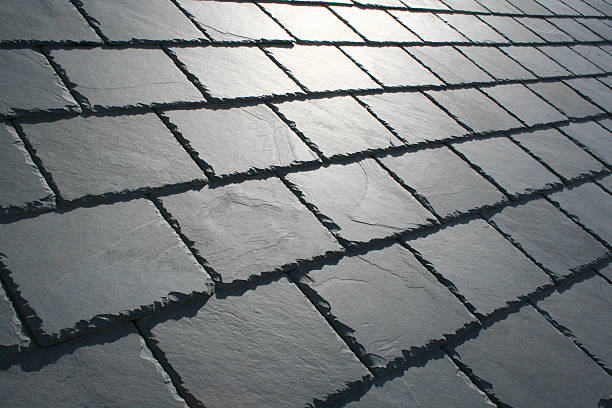Tiled Roofing London Properties: Conservation Area Considerations

Many London properties reside within designated conservation areas where planning regulations carefully protect architectural character and streetscape appearance. Property owners in these sensitive areas face specific requirements when undertaking roof improvements, with planning authorities scrutinizing material selections, colour choices, and installation methods ensuring compatibility with existing heritage character. Understanding these requirements and working effectively with planning officials enables successful projects respecting conservation objectives while achieving practical property improvements.
Conservation areas exist throughout London to protect particularly valued neighborhoods characterized by specific architectural styles, materials, or historical significance. These designations limit certain modifications that might be freely undertaken elsewhere, including roofing alterations. However, tile roofing typically receives favorable planning consideration as it respects traditional materials and methods aligned with conservation area objectives. Professional contractors experienced with conservation requirements navigate approval processes efficiently, ensuring successful projects meeting both planning standards and property owner expectations.
Planning Requirements and Conservation Area Rules
Conservation area planning controls vary between boroughs but commonly require planning permission for roof works previously permitted under prior approval rights. Some authorities require full planning applications for all roof replacements, while others grant specific permissions for like-for-like replacements maintaining materials and appearance. Property owners should check specific borough requirements before proceeding, with professional contractors often managing this verification and application processes.
Planning authorities typically require material specifications demonstrating compatibility with conservation area character. Tile choices must harmonize with existing neighborhood appearance, with planning officers comparing proposed colors and profiles against established local precedents. Traditional clay tiles usually receive favor over modern alternatives, and natural slate remains preferred in areas historically featuring slate roofing. Understanding local preferences enables appropriate material selection supporting planning approval likelihood.
Listed Building Constraints and Additional Approvals
Listed properties within conservation areas face additional restrictions requiring listed building consent from local authorities in addition to standard planning permission. Conservation officers scrutinize proposed changes ensuring modifications respect historic significance and preserve character-defining features. Listed buildings may require specific material types, traditional installation methods, or particular aesthetic approaches respecting original architectural intent. Professional contractors experienced with listed properties understand these additional requirements and prepare applications addressing conservation officer concerns appropriately.
Certain materials and methods familiar to modern roofers prove inappropriate for listed buildings. For example, modern artificial slates may be rejected in favor of genuine natural slate. Mechanical fastening systems might require concealment or replacement with traditional lime mortar bedding maintaining historical authenticity. Professional contractors experienced with heritage roofing understand these distinctions and successfully navigate complex approval requirements.
Material Selection for Conservation Areas
Tile selection for conservation area properties should consider established local materials, colours, and traditional specifications. Many London neighborhoods feature distinctive roofing character—for example, red clay tiles prevalent in Victorian areas, slate in Georgian districts, or specific tile profiles characteristic of particular periods. Professional tiled roofing London contractors guide clients toward materials respecting local character while meeting contemporary performance standards.
Colour selection proves particularly important, with planning authorities sometimes rejecting colors considered incompatible with conservation area appearance. Deep red clay tiles suit traditional neighborhoods, while slate gray tones complement Georgian or Victorian character. Modern concrete tiles in contemporary colors might face rejection despite excellent performance characteristics. Working with professional contractors familiar with specific conservation area preferences enables appropriate material selections supporting planning approval.
Sustainable Practices in Conservation Areas

Conservation objectives increasingly incorporate sustainability considerations, recognizing that historic buildings require efficient modern systems for long-term viability. Tile roofing aligns well with this balanced approach, offering traditional materials compatible with heritage requirements while delivering modern performance benefits including energy efficiency and longevity. Planning authorities increasingly support sustainable roofing approaches when materials respect conservation character and installation methods prove reversible, leaving future generations flexibility for future adaptations.
Planning Application Preparation
Successful planning applications for conservation area roofing work require detailed documentation demonstrating sensitivity to conservation objectives. Applications typically include site plans showing property location within conservation area, photographs illustrating existing conditions and surrounding context, material samples or detailed specifications, and written justifications explaining material and method selections. Professional contractors prepare comprehensive applications addressing conservation concerns while advocating effectively for appropriate modern solutions.
Timelines and Approval Processes
Planning applications in conservation areas typically require eight weeks for determination, though many resolve more quickly. Listed building consent often runs concurrently with planning applications, with both authorities collaborating on heritage considerations. Professional contractors manage application processes efficiently, communicating with planning officers when requested information proves necessary and addressing any concerns preventing approvals. Understanding likely timelines enables appropriate project scheduling and realistic expectations.
Conclusion
Tiled roofing for London conservation area properties successfully combines heritage respect with practical property improvement through appropriate material selection and professional planning navigation. Working with experienced contractors familiar with specific conservation requirements ensures successful approvals and satisfactory project outcomes. Professional expertise proves invaluable for understanding requirements, preparing compelling applications, and delivering outcomes respecting both conservation objectives and property owner needs. For broader understanding of heritage conservation principles and sustainable building practices, exploring resources regarding roofing systems provides valuable context supporting informed decision-making for conservation area projects.
A&A Roofing Solutions
Address: 17 Honey Lane, Waltham Abbey, United Kingdom
Phone No.: +44 800 048 5580
Map Location: https://maps.app.goo.gl/o1Ja2ikKhnfLQY5f8
Comentarios
Publicar un comentario